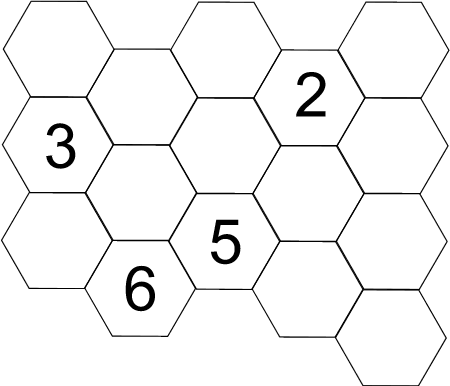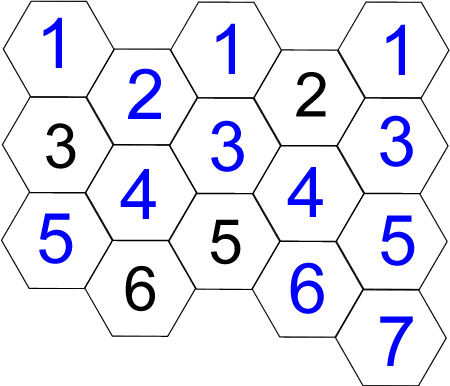Buzzy bee
Buzzy Bee was building a honeycomb. She decorated the honeycomb with a pattern using numbers. Can you discover Buzzy's pattern and fill in the empty cells for her?
Problem
Buzzy Bee was building a honeycomb. She decided to decorate the honeycomb with a pattern using numbers. Can you discover Buzzy's pattern and fill in the empty cells for her?

Getting Started
Which number might go in between the 3 and the 5?
What number could follow on from the 5 in that line going diagonally down to the right?
Student Solutions
Mark has sent a solution to the Buzzy Bee problem. Here is the completed honeycomb with Mark's numbers in blue:

Ginny sent in the following:
My seven-year-old grandson Jack loved solving this puzzle. I said I'd send it to you. We are in America.

Jack's mum made a video for me as he doesn't live with me.
I can tell you that he started with the number 4 between the 3 and the 5 because he saw that pattern. With discussion, he saw the relationship between the 4 and the 6 below and was super excited.
There's a video here with Jack saying a few things about his solution: Buzzy Bee.mp4
Thank you Jack for your very good work and explanation, and to Ginny for sending it in to us.
Teachers' Resources
Why do this problem?
Possible approach
Key questions
Possible extension
Possible support
